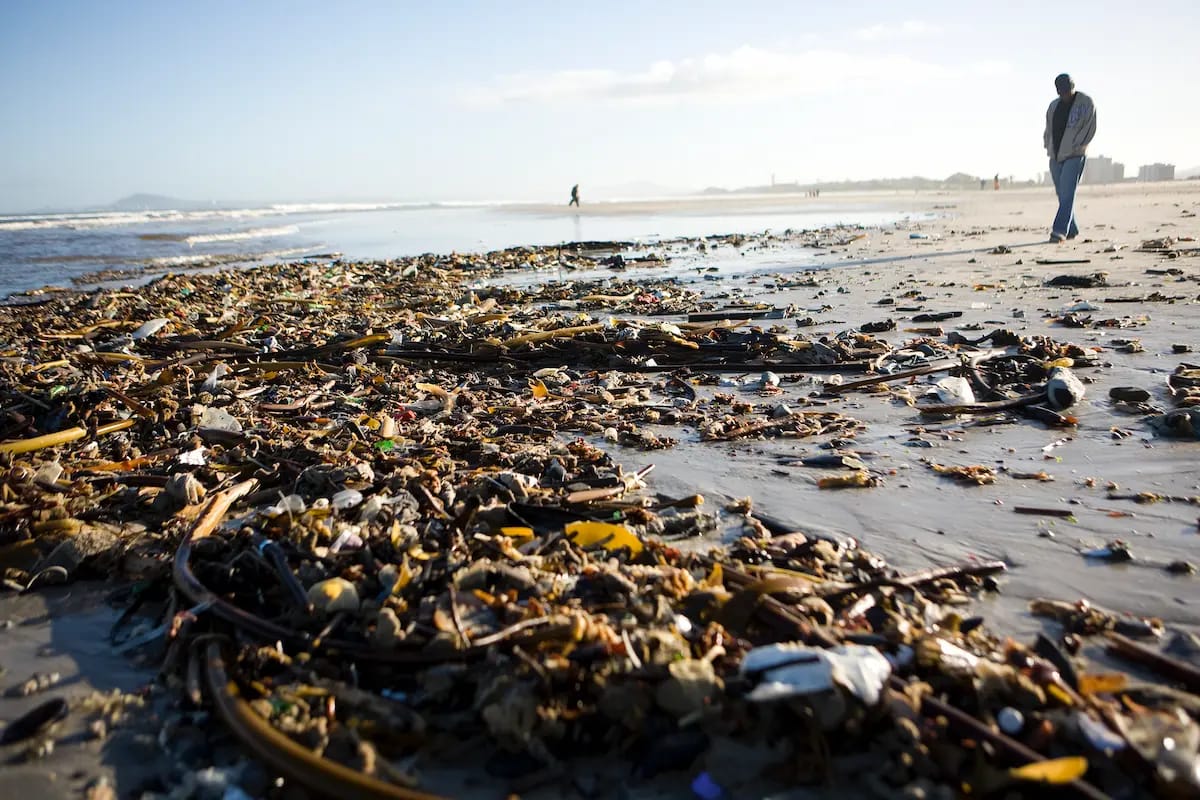I love long walks on the beach. No, I’m not writing a dating profile here. I really do love strolling for miles on the sand. There’s something nice about exploring the coast, and whenever you get hot you can just pop into the ocean waves to cool down! During my recent beach excursions, I’ve encountered more and more ribbons of seaweed snake through the sand or even find it piled up in stinky brown clumps. These sights led me to wonder why more and more seaweed was surrounding me on my ocean walks and where was it all coming from.
Love ocean content?
Enter your email and never miss an update
document.addEventListener(‘DOMContentLoaded’, function() {
const form = document.getElementById(’email-signup-64dfbd89a447b’);
form.querySelector(‘.rsform__field–email’).addEventListener(“nb:result”, e => {
const nbStatus = form.querySelector(“[name=”nb_email_status”]”);
const nbDate = form.querySelector(“[name=”nb_validation_date”]”);
const tokenField = form.querySelector(“[name=”token”]”);
const currentDate = new Date();
nbStatus.value = e.detail.result.response.status;
nbDate.value = currentDate.toISOString().split(‘T’)[0];
grecaptcha.enterprise.ready(async () => {
const token = await grecaptcha.enterprise.execute(‘6Lcmr3shAAAAAAVRlvJrsUufEEQuItzNDlkpmB2g’, {action: ‘verify’});
tokenField.value = token;
});
});
});
<!– –>
What is seaweed?
Let’s start with a basic question. Seaweed can describe many species of plants and algae that live in our ocean. They can come in various hues from red to brown to green. Types of seaweed include Sargassum, kelp and red algae. Seaweed can be a nutritious source of food and an important part of the habitat of many ocean animals including turtles, sea lions and pufferfish. Seaweed also produces vital oxygen through photosynthesis and plays a big role in giving us the air we breathe.
Where does seaweed come from?
One type of seaweed commonly found on beaches is Sargassum, a free-floating seaweed found in the warm waters of the Atlantic. In the Sargasso Sea, Sargassum provides a rich environment for wildlife that has been called a floating rainforest. Massive Sargassum rafts form critical habitats and breeding grounds for a variety of ocean animals including eels, sea turtles and mahi mahi. There are ten marine species found in floating Sargassum that are detected nowhere else including the sargassum crab and the sargassum fish.
Lately, however, we’ve seen massive amounts of Sargassum on our shores that is not from the Sargasso Sea but from the Great Atlantic Sargassum Belt. This belt is less biodiverse and contains larger collections ofSargassum patches stretching 5,000 miles long and 300 miles wide across the Atlantic Ocean. At its thickest, the belt contained more than 22 million tons of seaweed. (Nerdy side note: We can track all of this Sargassumbecause of its pigment that reflects infrared light and makes it easy for scientists to track it via satellite!)
Why is there more seaweed on my beach?
If you’ve enjoyed a beach in the Gulf of Mexico or Caribbean Sea recently (lucky you!), you might have noticed drastically more seaweed in recent years. Small quantities of Sargassum washing up on shores is no problem and entirely normal. Lately, however, we’ve seen massive amounts of Sargassum hit our beaches from the Great Atlantic Sargassum Belt. For the past decade this belt has broken records in size and caused devastating consequences when all that seaweed hits land. What’s worse is as more Sargassum grows it can seed even more Sargassum ,which is why we’ve seen bigger and bigger blooms over the years. Unfortunately, that means all this seaweed on our beaches could be a “new normal.”

if(typeof window.oc_media_credits === ‘undefined’) {
window.oc_media_credits = {};
}
window.oc_media_credits[70031] = “Samantha Reinders / Aurora Photos”;
There are many possible reasons why we are seeing more and more Sargassum in the Atlantic. One possible contributor is nutrient pollution from land that washes into the ocean from cities, farms, roadways and other human sources. This effectively floods the ocean with a food source that leads to rapid growth in Sargassum. Another possible source is one we know all too well, climate change. Changes in surface temperature, rain and currents could be fueling Sargassum growth which is why it is so important that we act on climate now.
Why does seaweed smell so bad?
Rotting Sargassum on the shore releases hydrogen sulfide which can be hazardous to human health. The gas smells like rotten eggs which is why beaches inundated with Sargassum smell so bad. This gas can irritate the eyes, nose and throat, and can cause breathing issues, particularly in people with asthma or other respiratory conditions, so be cautious.
What is the impact of all this seaweed?
Although it is a natural occurrence, excessive Sargassum can wreak havoc on more than just our dreams of a perfect vacation. National and state emergencies have been called after Sargassum devastated local fishing and tourism industries. Dolphins, sea turtles and other ocean creatures can get entangled in the blobs of seaweed and die after being unable to surface for air. Too much Sargassum can block out sun and smother coral reefs and sea grass meadows. Sea turtle nesting can be disrupted when piles of Sargassum on beaches make it harder for their babies to emerge and find their way to the ocean. Sargassum can even change the water chemistry as it decomposes making it harder for ocean life to survive. These massive, disruptive sargassum blooms could become the “new normal” due to climate change, spelling disaster for our beaches. We are already seeing the impact of greenhouse gas pollution on our ocean and planet. Join Ocean Conservancy in taking action to combat climate change now—before these changes continue to get so much worse.
The post Why is There So Much Seaweed on the Beach? appeared first on Ocean Conservancy.

